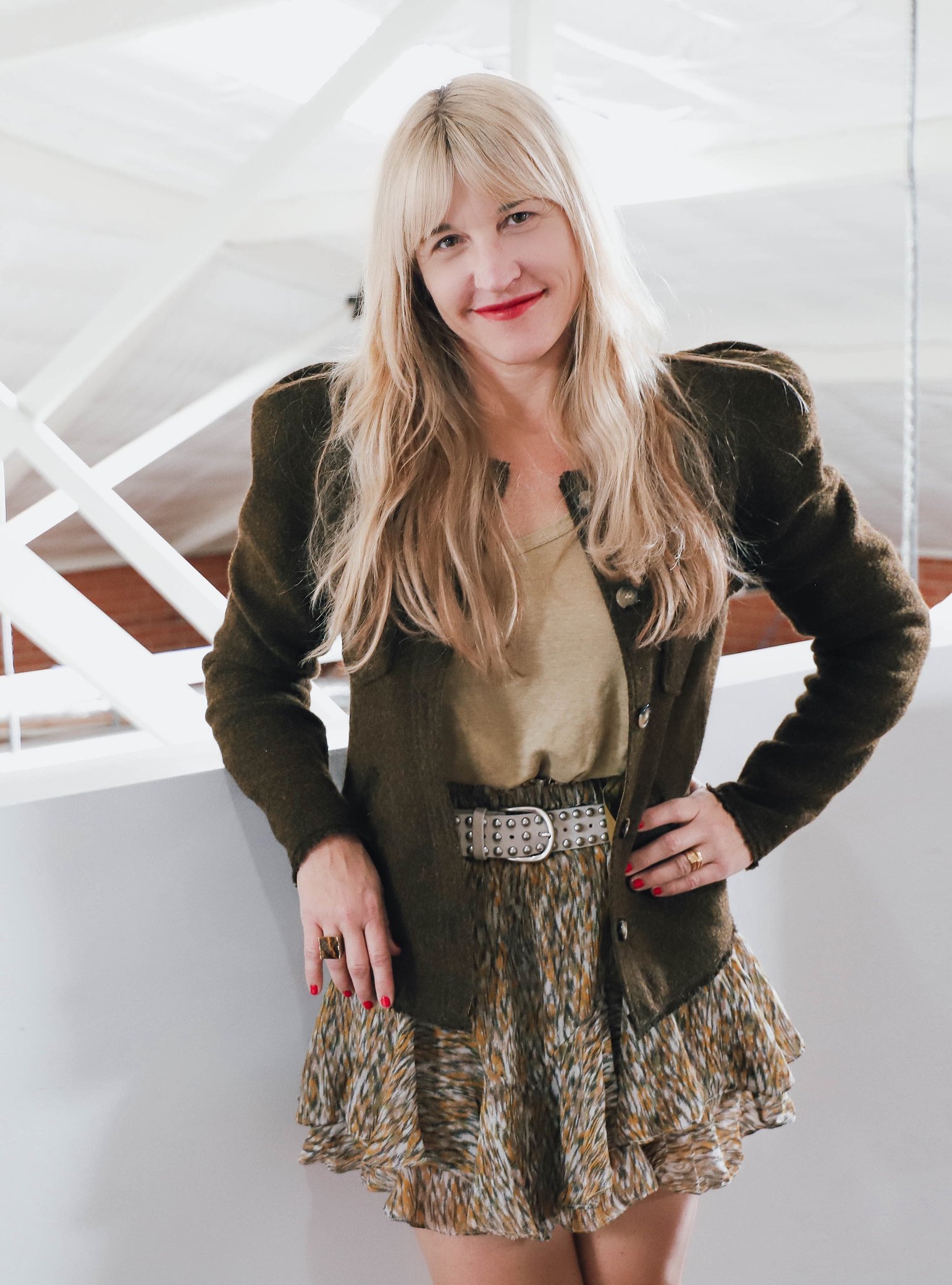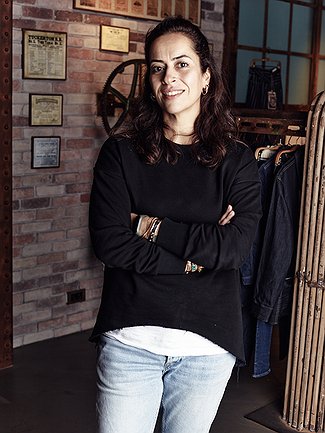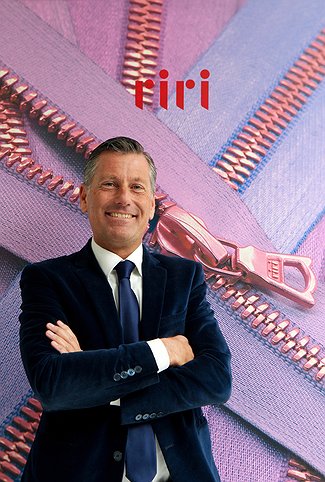INDUSTRY FOCUS: SUSTAINABILITY
Collaborating on Responsible Apparel Without Compromise
Successfully moving fashion into a more responsible and sustainable industry requires apparel companies to work with one another and share their advancements in better garment making; however, many brands are tight-lipped regarding their best ecological and ethical practices. Although fashion is an industry whose brands have historically relied on exclusivity and mystique, companies must share their achievements in sustainability if they intend to support sustainable messaging with action. Brands who do not participate in this crucial step of being a responsible company are simply contributing to the problems that prevent the industry from progressing forward.
The old guard in apparel is beginning to change as more brands discover methods of sharing their best environmental practices without revealing the secrets that comprise the essence of their companies. California Apparel News asked sustainability leaders in the fashion industry: How can brands embrace transparent storytelling to promote a sustainable mission without compromising their proprietary information?
Mike Abbott
Head of Textiles & Flooring
HeiQ
The path to a sustainable future lies in innovation, guided by transparent storytelling that fosters understanding and engagement across the value chain.
One of our most successful projects was 100 percent bio-based technologies including active probiotics and prebiotics that enhance skin health. These solutions often surpass existing technologies regarding environmental, social and governance profiles.
Transparency is key to building trust and inspiring change. We live by this principle.
Daren Abney
Executive Director
U.S. Cotton Trust Protocol
By focusing on sharing their sustainability journey and the impact of their efforts. By highlighting their commitment to sustainability and providing verifiable data on their practices, they can also build trust with consumers.
One effective way to achieve this is by leveraging tools and programs that enhance traceability and transparency in their supply chains. For example, the U.S. Cotton Trust Protocol offers brand and retailer members the ability to track the journey of U.S. Cotton and Protocol Cotton throughout their supply chains. This traceability system allows brands to provide consumers and other entities with credible information about the country of origin of the fiber they are sourcing as well as farm-level metrics related to the sustainable growing practices of farmers enrolled in the program, including data on water use, soil health and greenhouse-gas emissions.
Having access to this verified data allows brands and retailers to make informed decisions about their sourcing strategies. These companies can choose how much of this information to include in their communications, tailoring their storytelling to balance transparency and the protection of proprietary details. In essence, transparent storytelling, supported by verified data from programs like the Trust Protocol, enables brands to build a sustainable reputation.
Kerry Bannigan
Managing Director
PVBLIC Foundation
Brands can focus on their ethical principles, environmental practices and social-impact initiatives through strategic communication. By sharing sustainability goals, challenges and tangible outcomes of efforts through detailed case studies, third-party certifications and consumer education, brands can build trust without the disclosure of sensitive data that could jeopardize competitive advantage. This approach ensures that the brand’s commitment to sustainability is communicated effectively and reinforces transparency while fostering a culture of accountability and progress within the industry.
Meredith Boyd
Chief Product Officer
UNIFI, makers of REPREVE
Today’s consumers seek trust and transparency, especially regarding matters of sustainability. Brands should be vocal about sustainable initiatives in their public communications, product descriptions and storytelling.
They can tout partnerships and verifications that support greener practices. Examples include certifications like REPREVE’s U Trust, which is powered by UNIFI’s proprietary FiberPrint tracer technology, which enables brands to confirm the presence of recycled REPREVE performance fiber in their products. Certifications like these are clear-cut, easy ways for consumers to understand a brand’s sustainability story.
Another way brands can get in touch with contemporary consumer sentiment is to make public commitments to sustainability goals, providing ongoing updates on progress and timeline along the way. REPREVE enables brands to engage with public goalposts through its commitments to recycle 50 billion post-consumer plastic bottles by FY2025 and 1.5 billion T-shirts’ worth of textile waste by FY2030. Metrics like these don’t just provide hard evidence of progress, they also offer impactful storytelling tools for brands to underscore sustainability as a priority.
Transparency and proprietary protection are not mutually exclusive. We’re proud to offer brands a venue to take action, better their practices and share these steps with customers. UNIFI also encourages brands to set individual goals, adopt and publicize in-house innovation initiatives and weave sustainability into the core of their messaging.
Katrina Caspelich
Chief Marketing Officer
remake.world
Brands can embrace transparent storytelling by sharing their sustainability missions—their goals, journey and progress in an authentic and engaging way. This includes highlighting the steps they are taking to reduce their environmental impacts such as ethical manufacturing practices, using sustainable materials and reducing waste. Brands can also share stories of their supply-chain partners, behind-the-scenes content and offer data on the impact of their sustainability practices. I believe that focusing on more positive impact and being honest about the challenges they face allows brands to build trust among consumers. By sharing overarching strategies and outcomes rather than detailed processes or trade secrets, brands can better balance transparency with protecting their proprietary information.
Jennifer Evans
Founder
TEG
I first ask what proprietary information needs to be protected: actual designs, patterns and formulas for fabric treatments. If promoting sustainable practices of a brand is its focus, why would sources or overall processes be a secret?
When Volvo engineer Nils Bohlin invented the seatbelt in 1959, the company decided to make the patent available to all competitors for free. Volvo recognized that the seatbelt had the potential to save many lives, and it prioritized public safety over potential profits. If sustainability of the Earth’s resources were an earnest focus of a brand and not a marketing trend, I would encourage the mindset and openness to the free exchange of ideas and the sources behind them.
Removing the barriers of secrecy through storytelling is the right step in truly creating a sustainable environment for the industry overall. Brands openly sharing their processes or sources for the greater good of the environment can only help achieve lasting results. I encourage small and large companies to do so through authentic storytelling and perhaps realize a new and possibly greater level of exposure and loyalty their true transparency provides.
Andrea Ferris
Co-founder and Chief Executive Officer
CiCLO technology
Transparency is crucial when it comes to sustainable storytelling and can be easily achieved without disclosing confidential information. Since we launched CiCLO technology as a textile ingredient in 2017, we’ve worked with hundreds of retailers and apparel brands. Every one of them wants to choose materials that are less harmful to our planet, but to do so they need a deep dive into the chemistry, benefits, environmental impacts, traceability and how to make responsible consumer claims that are substantiated with evidence.
Our technical team works closely with customers to explain all there is to know about CiCLO and answer questions. Much of the information is also accessible publicly to brands and consumers. To protect proprietary intellectual property, we provide proof of EU REACH compliance and OEKO-TEX ECO PASSPORT certification, which can also be used on hangtags attached to consumer products made with CiCLO technology. These third-party certifications can be even more effective than disclosing proprietary information because they get to the heart of what matters—independent verification of safety, sustainability and regulatory compliance.
Ebru Özküçük Guler
Chief Sustainability Officer
RE&UP
As a circular tech company that reshapes the traditional textile-to-textile paradigm and finds solutions for the planet’s most pressing challenges, we can tell how important it is to rethink the industry in a circular way, from mills, brands, re-collection and recycling platforms back to mills and brands in a closed loop.
The support of governments and institutions plays a crucial role in this movement because change happens if all economic, industrial and institutional actors play their part. The more players are involved in the process the better it works, and this should be as transparent as possible to make the final consumer aware and part of it. It does not mean that brands should share proprietary information to be transparent with consumers. But at the bare minimum, consumers should know the environmental impact of their clothes and the alternatives, like our Next-Gen Cotton and Next-Gen Polyester, that maintain the same performance as virgin fibers, bringing circular solutions to life.
Having built a seamless circular ecosystem that transforms end-of-life textile waste into high-quality, Next-Gen raw materials at scale, RE&UP can supply this information to mills and brands, and we hope that the Digital Product Passport will contribute to the growth of the circular approach at all levels of production to the end consumer.
Jen Hodo
Business Development Manager
Birla Cellulose USA
Modern consumers increasingly demand verifiable sustainability credentials, and transparency can help build trust by demonstrating a brand’s commitment to ethical and sustainable practices. A study by Cone Communications found that 90 percent of consumers are more likely to trust and remain loyal to brands that are transparent about their operations. Brands can effectively embrace transparent storytelling by using innovative blockchain-enabled traceability tools like Greentrack, which balances transparency with the protection of proprietary information.
With the Greentrack platform, brands can control the details that are shared; for example, supplier names can be hidden, maintaining the confidentiality of sensitive business details while providing enough transparency to meet consumer expectations.
Additionally, showcasing third-party certifications—for example, OEKO-TEX, GRS and RCS—can validate sustainable practices and build trust while reducing the need for detailed proprietary disclosures. Collaborating with NGOs, sustainability experts and educational institutions as well as creating educational content that informs consumers about the broader impact of sustainability and how your brand aligns with these values—emphasizing outcomes over processes—can further validate and amplify sustainable practices, enhancing credibility and providing authenticity.
Marco Lucietti
Director of Strategic Projects
ISKO
We believe that transparent storytelling is key to promoting a sustainable mission. Transparency in the supply chain educates consumers, builds trust and encourages informed purchasing decisions. However, balancing this transparency with the need to protect proprietary information can be challenging.
One effective approach is to provide detailed insights into the supply chain, emphasizing the differences between low- and high-impact garments, materials and processes. For instance, we can share information about the sourcing of raw materials, the environmental impacts of different production processes and the sustainability practices we adhere to at each stage of manufacturing. This level of transparency helps consumers understand the journey of their garments from raw materials to finished product, fostering a deeper appreciation for sustainably produced items.
A great example of how transparency and sharing of info can happen is the Digital Product Passport. This innovative solution enables us to provide detailed information about each product’s journey. The DPP ensures transparency by documenting every stage of the production process, including sourcing, manufacturing and distribution. Importantly, it does so in a way that protects sensitive proprietary information by focusing on key data points relevant to sustainability while still providing consumers with the right information.
Nantas Montonati
Head of Sales and Marketing
Oerlikon Luxury
When you partner with the most important luxury brands, transparency and sustainability must be unavoidable guidelines to ensure a perfect product in every aspect: Our promise cannot be less than excellence in every detail. That is why we provide our clients with all the audits, information and data they need to get the overview on suppliers, production processes and every aspect of our business practices.
Although we do not have a legal obligation, for the past four years we have been sharing with our stakeholders our “commitment to sustainability” with all economic, environmental and governance results. In our personal experience, having become part of a publicly traded industrial group, we have a greater responsibility to thousands of stakeholders who place their trust in us and deserve transparency. As Oerlikon Luxury, we need to communicate on different fronts and fields. We try to do it in the best possible way, conveying our responsible commitment and our technological innovations without ever losing sight of the most important aspect: fashion, and especially luxury fashion, must convey above all beauty and emotion.
Ngozi Okaro
Founder and Executive Director
Custom Collaborative
At Custom Collaborative, we are dedicated to transparent storytelling as a key pillar of our mission to train, mentor and advocate for no- or low-income and immigrant women, helping them achieve economic success in the sustainable-fashion industry. Our goal is to inspire actionable change toward eco-friendly and ethical practices both within the fashion industry and beyond.
We deploy deeply researched methods and diverse expertise to design and execute three core programs: the Training Institute, Business Incubator and Worker-Owned Cooperative. By openly sharing our journey and the stories of those we support, we foster a passion for sustainable practices and build a committed community dedicated to ethical and environmentally friendly fashion.
Central to our strategy is the sharing of personal stories from our program participants, highlighting the positive impact on individuals and communities. This approach showcases our commitment to green production and fair wages while carefully managing the confidentiality of sensitive information. We ensure that the stories we share reflect the voices and experiences of the marginalized women we serve through thoughtful collaboration, consent and feedback, avoiding negative tropes.
A notable challenge within the fashion industry has been convincing mainstream brands to disclose their responsible business practices. Despite progress in recent years, with more brands beginning to share their practices, much work remains. Our transparent approach serves to both educate and motivate others to join us in driving meaningful change in the fashion industry and beyond.
Alexa Raab
Director of Communications
CovationBio
I think the various members of our value chain are the most authentic storytellers we have for Sorona. In particular, members of our Preferred Mill Network and those active in our Common Thread Fabric Certification Program have demonstrated their commitment to not only using our ingredient but have the desire to amplify its benefits. We work together to ensure they are equipped with the correct brand assets such as images and logos and verbiage to deliver a consistent, powerful message globally.
Carolina Sister Cohn
Global Marketing Lead, Textiles
Eastman
Individual ingredients can really make a difference for brands in achieving their sustainability goals through certifications and traceability of materials as reliable partners to make their products more circular, less impactful on the environment and aligned with regulations. They are like pieces of a puzzle that fit together perfectly to create an extraordinary, unique and fashionable sustainable design.
Among the main goals of our mission is to make sustainable fashion accessible to all and to integrate circularity. We must also be able to contribute to a culture of sustainability that is not always guaranteed. That is why we are working with brands to support them directly in their retail and online stores, providing them with clear and simple information that the end consumer can easily understand and appreciate. Similarly, we are working with design schools around the world to introduce the value and benefits of Naia directly to those who will design the future of fashion and have to put together beautiful puzzles in as circular a form as possible.
Andrea Venier
Managing Director
Officina39
I have seen and appreciated a significant improvement in the fashion industry in recent years, but it is clearly still not enough. From a chemical point of view, to promote true transparent storytelling I hope that in the future there will be a more straightforward and shared protocol based on transparency and data. But one point should be a must in this discussion: We definitely need to simplify the system.
Today we have a lot of restricted substances lists and a lot of protocols, which mostly means a lot of certifications. Do all these certifications help consumers buy better clothes? My answer is maybe yes, but they are certainly not enough. Our industry needs to do much more.
A lot of certifications and protocols create a lot of confusion—it’s logical, it’s obvious, it’s what we see every day. Behind this, I do not see a common interest but rather a fractionalization of efforts that does not take us very far. Therefore, to achieve greater transparency, in my opinion, we first need to simplify the system.
From my personal point of view the solution would be to have a shared protocol based on transparency and ethics. Every company should adopt it as if it were an ISO 9001. Clear rules to ban dangerous products, increase transparency while protecting intellectual property and implement a code of ethics to be signed. I don’t mean that simplifying is easy, but deciding that it is necessary is already a step along the way.
Luciano Vivolo
Founder and President
Vivolo
I don’t really like to talk about transparent storytelling. I prefer to stay on the pragmatism and materiality of the product. That’s why I think that genuine and honest communication is only possible if the product itself is born, grows and develops in a virtuous context.
All suppliers must be required to demonstrate how each stage of the supply chain adheres to the brand’s ethical and production standards. This is essential to gain respectability and credibility in the market, especially in the higher-price segments where it is necessary to build an ongoing relationship of trust with customers and the end consumer. Brands can only do this by meticulously documenting and sharing every stage of their production process from the sourcing of raw materials to production steps, from working conditions to environmental impact.
Using third-party certifications and audits can increase credibility while maintaining confidentiality. Achieving the required standards is a real and daily commitment, but working with recognized certification agencies ensures that all statements are independently verified, adding an extra layer of trust. By providing this level of transparency, brands not only demonstrate their commitment to sustainability but also can elevate themselves above the level of commodities where they risk overcrowding and the fatal acceptance of price dynamics, to the detriment of those aesthetic and qualitative values that make haute couture desirable and timeless.
*Responses have been edited for clarity and space.






































